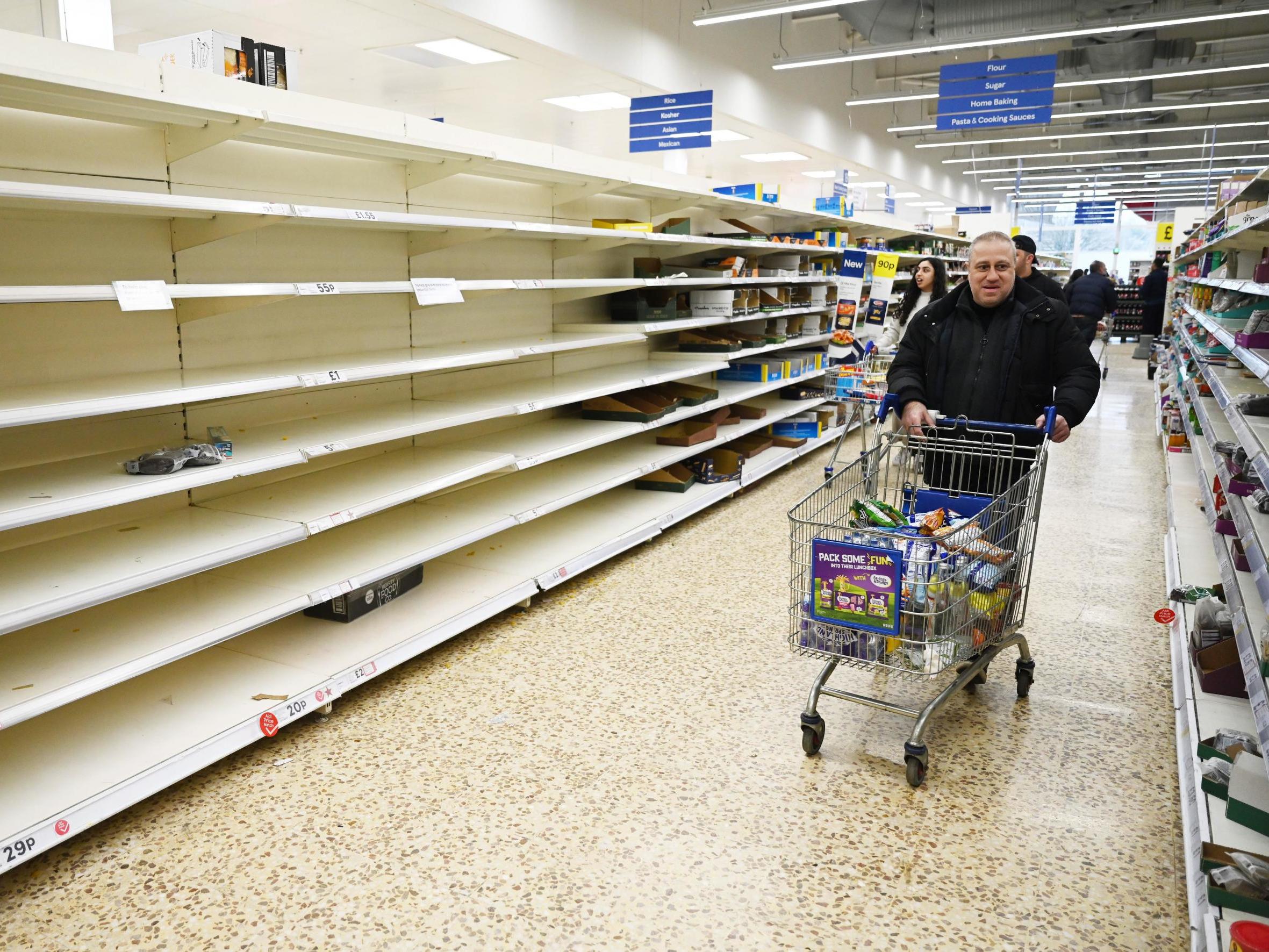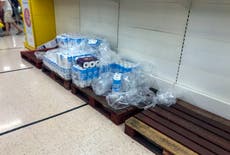Here’s why panic buying happens – and how it will likely go digital as the threat of a second lockdown looms
Online purchases will be preferred due to the ease, convenience, and anonymity it provides

Your support helps us to tell the story
From reproductive rights to climate change to Big Tech, The Independent is on the ground when the story is developing. Whether it's investigating the financials of Elon Musk's pro-Trump PAC or producing our latest documentary, 'The A Word', which shines a light on the American women fighting for reproductive rights, we know how important it is to parse out the facts from the messaging.
At such a critical moment in US history, we need reporters on the ground. Your donation allows us to keep sending journalists to speak to both sides of the story.
The Independent is trusted by Americans across the entire political spectrum. And unlike many other quality news outlets, we choose not to lock Americans out of our reporting and analysis with paywalls. We believe quality journalism should be available to everyone, paid for by those who can afford it.
Your support makes all the difference.In spring, news of lockdowns caused people to flock to grocery stores and supermarkets with the common goal of purchasing enough goods to last them a period of quarantine. Even if you were required to self-isolate for two weeks, you wouldn’t need much.
The average person uses only two rolls of toilet paper per week. So, you’d only need a few rolls of toilet paper and a few bags of groceries and other supplies to last. But what happened was that a handful of highly anxious people started over-purchasing, buying quantities in excess of what they realistically needed. Anxiety is contagious.
Fellow shoppers saw this and began to worry that they too would miss out. Fear of shortage created real short-term shortage. Anxious people began fighting over supplies, and photos and videos of altercations and empty shelves went viral on the internet. This had a snowball effect, leading more and more people to rush to the stores. As a result, shops started imposing quotas on how much you could purchase. But panic buying soon fizzled out, just like other social manias.
What happened next may likely have an impact on panic buying behaviour ahead of a possible second lockdown. People began engaging in what is known as “emotion-focused coping”. That is, coping that aims at reducing negative emotions such as anxiety or depression. During the first lockdown earlier this year, this sort of coping consisted mainly of over-eating, consuming excessive amounts of alcohol or drugs, and, crucially, online shopping. Online shopping became a salve for these highly distressed people, creating a brief respite from the stress and boredom of lockdown.
At about the same time, there was a general rise in online shopping services to meet this extra demand, including takeaway food deliveries and grocery store home deliveries. Online shopping for staple supplies became the new norm for many people and seems to have persisted even after the lockdown restrictions were lifted.
Toilet paper continues to be the target of panic buying. Toilet paper has become a symbol of safety as well as a potentially scarce, and therefore highly valued, commodity. During the first wave of panic buying, early in the pandemic, there was little that people could do to keep themselves safe. They were told that all they could do was wash their hands and cover their coughs. Panic buying became a way that people could feel in control. People who are highly frightened of infection also tend to be highly sensitive to disgust. Feelings of disgust are like alarm bells that motivate people to avoid sources of disease.
Toilet paper is a means of escaping from disgusting things, so toilet paper became a symbol of safety for anxious, disgust-prone people. Images and videos went viral, depicting panicked buyers fighting over big packets of toilet paper. This fuelled fear of scarcity and heightened the sense of urgency for acquiring this scarce symbol of safety. Panic buying of toilet paper gave people a sense of control over the pandemic, even if the control was illusory.
A second wave of lockdown has occurred in some places, such as Australia, where there have been instances of panic buying in supermarkets and grocery stores again. Mounting fears of a second lockdown in other places such as the UK and Canada has triggered new waves of panic buying of toilet paper and other staples.
But will the second wave of panic buying be as bad as the first? It’s hard to say. On the one hand, in the northern hemisphere we’re entering winter and the festive season, which is a traditional time for over-purchasing of food and other items. However, stores in some countries are now pre-emptively imposing quotas, thereby preventing the over-purchasing of things like toilet paper.
There will be a resurgence of panic buying when people are threatened with a second lockdown, but in all likelihood panic buying will increasingly go digital, due to the ease, convenience, and anonymity it provides. During the first wave of panic buying, there were instances in which people were publicly shamed for over-purchasing. Public shaming is toxic, making a bad situation even worse. Therefore, people who anxiously stockpile may increasingly turn to online purchasing as a way of avoiding criticism from fellow shoppers.
With an increase in digital panic buying, you may also discover that it has become even harder to purchase supplies online. You may find that your order for a Christmas turkey has been suddenly cancelled due to insufficient stock. If this happens, it’s important to remember that we’re not suffering from a supply chain problem. It’s most likely over-purchasing by a relatively small cohort of highly anxious individuals.
Once the second lockdown is over, digital panic buying will fizzle out. You’ll get the turkey you purchased online, eventually.
Steven Taylor is a professor and clinical psychologist in the Department of Psychiatry at the University of British Columbia, Canada. His most recent book, published just prior to the outbreak of Covid-19, is ‘The Psychology of Pandemics: Preparing for the New Global Outbreak of Infectious Disease’




Join our commenting forum
Join thought-provoking conversations, follow other Independent readers and see their replies
Comments